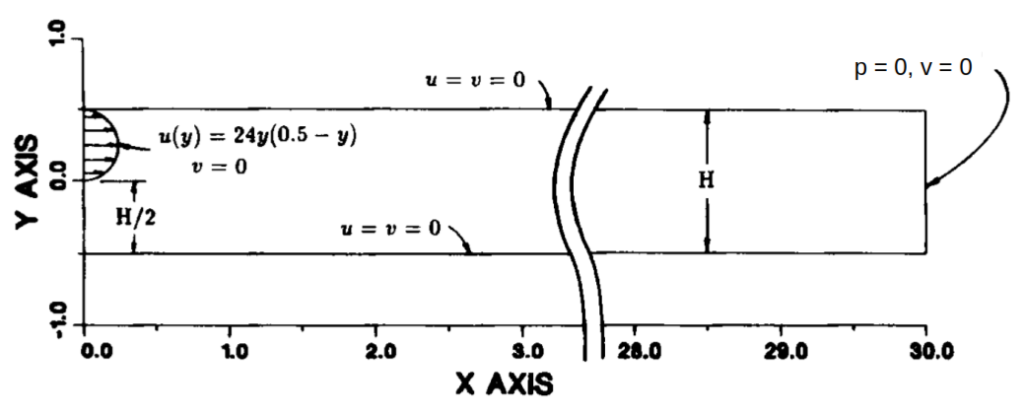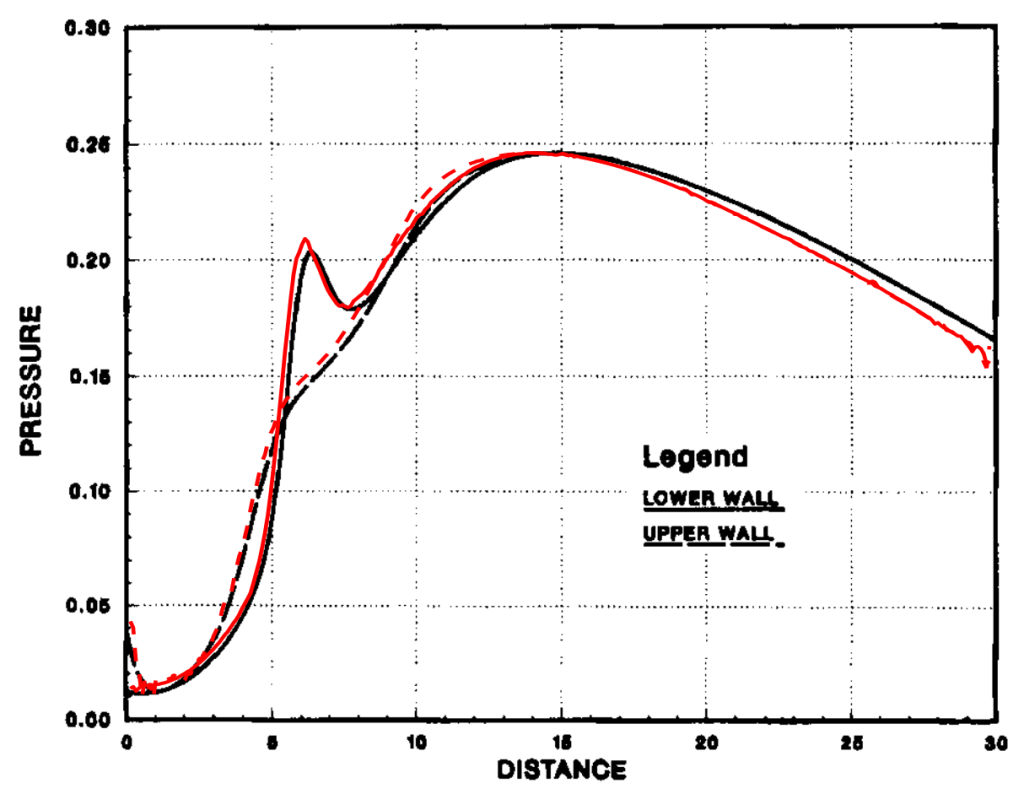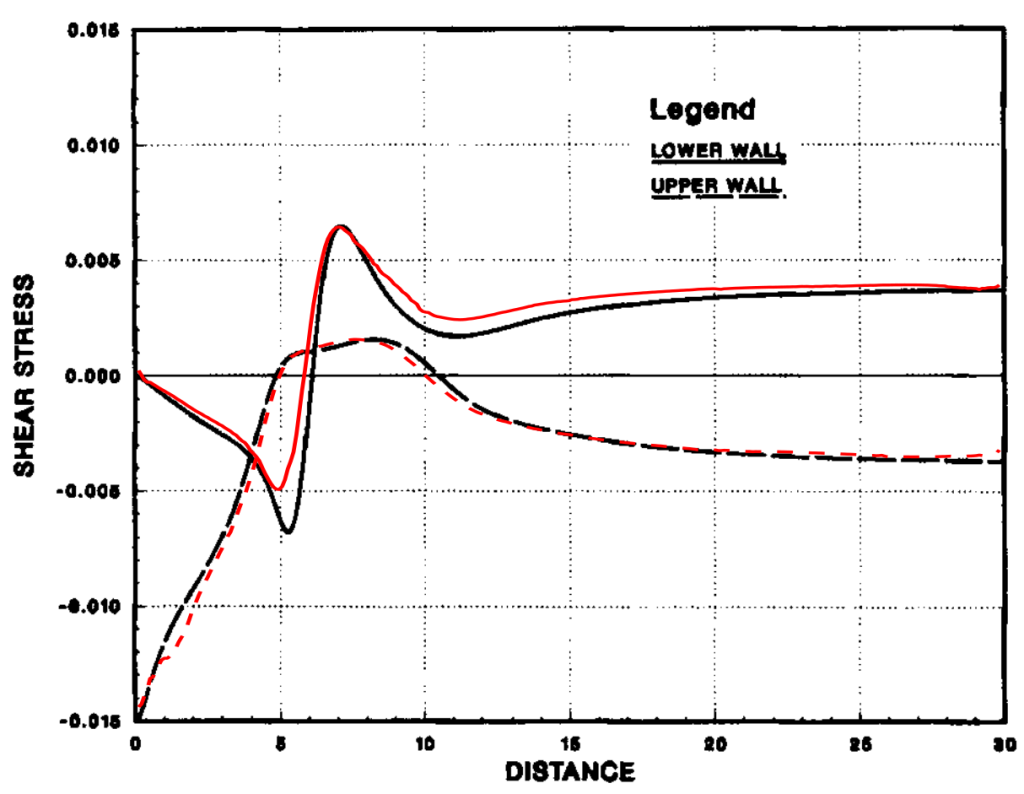Backward facing step
The problem involving a steady viscous incompressible flow over an isothermal two-dimensional backward-facing step is a standard test problem that has been addressed by numerous authors using a wide variety of numerical methods. Since the problem defined here is intended to provide a basis for the comparison of various outflow boundary conditions, the standard step geometry was simplified by excluding the channel upstream of the step. As shown in Figure below, the downstream channel was defined to have unit height H with a step height and upstream inlet region set equally to H/2. For purposes of generating the baseline solution to this problem, the downstream channel length was taken as L = 30 H,i.e. the channel extends 60 step heights from
the inlet.

The boundary conditions for the step geometry included the usual no-slip velocity specification for all solid surfaces (see Figure above). The inlet velocity field was specified as a parallel flow with a parabolic horizontal component given by u(y)= 24y(0.5- y) for 0 <y <0.5. This produces a maximum inflow velocity of umax = 1.5 and an average inflow velocity of uavg = 1.0. The outflow boundary condition assumed a parallel flow and an outflow pressure equal to zero.
Initial random vx and vy were assigned to avoid issues of the starting simulation from a null incompressible field.
Initial and boundary conditions are set in fluid_ic_bc.hpp file.
A Re 800 flow was simulated for the comparison with the reference solution. A custom fluid with unit density is taken. Since average velocity is unit, as well as inlet dimensions, the viscosity of the custom material was set to 1.25e-3 Pas. Properties are assigned in the props.txt file.
Computations were performed with 0.01 s of time step, adopting the diagonal incompressible tau of 2007. This setup can be found in setup.txt file.
The grid has 0.05 m spacing from the inflow outwards, up to 0.08 m at the outflow, and is defined in file mesh.geo.
The contours of velocity and pressure were compared with the reference solution, as shown below, where the same countours are depicted.




The time evolution of velocity and pressure fields follows below:
In the following, the comparison of pressure and shear stress distribution along the lower and upper walls. Note that near the exit plane the pressure closely approaches a constant slope consistent with a fully developed flow and the shear stress reaches a nearly constant value.


Reference
Gartling “A TEST PROBLEM FOR OUTFLOW BOUNDARY CONDITIONS-FLOW OVER A BACKWARD-FACING STEP” (1990) Int. Jour. Num. Meth. Fluids.
Proudly powered by WordPress
